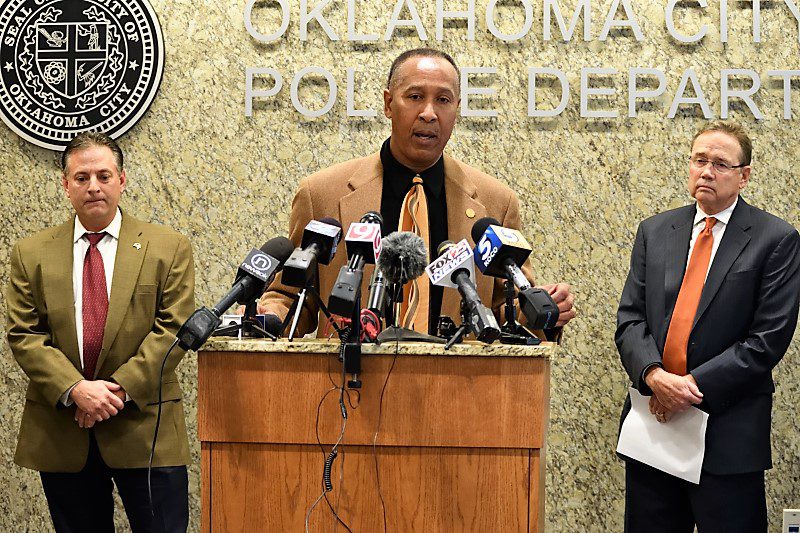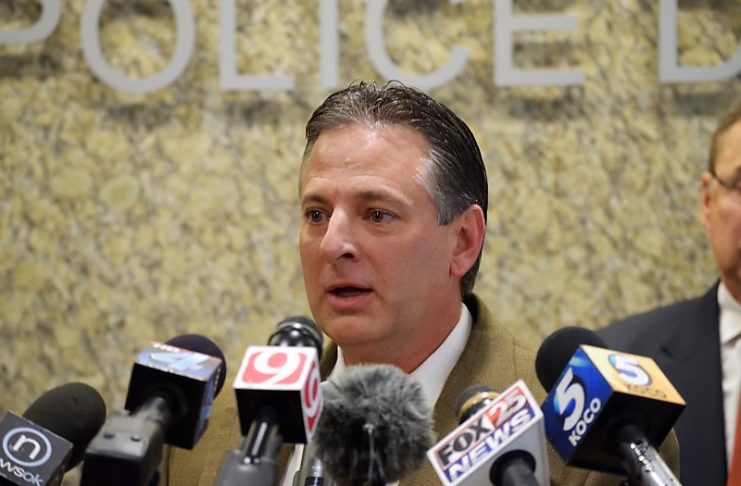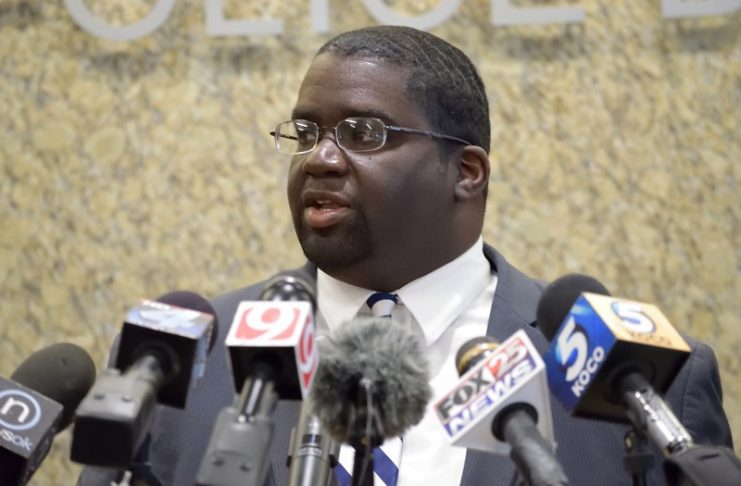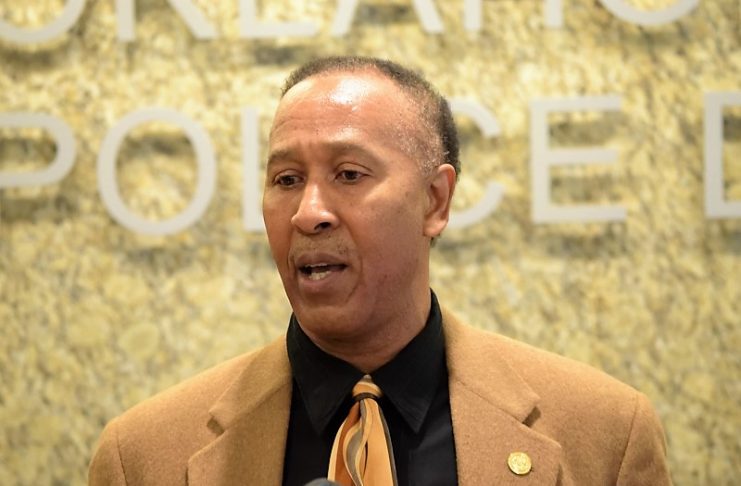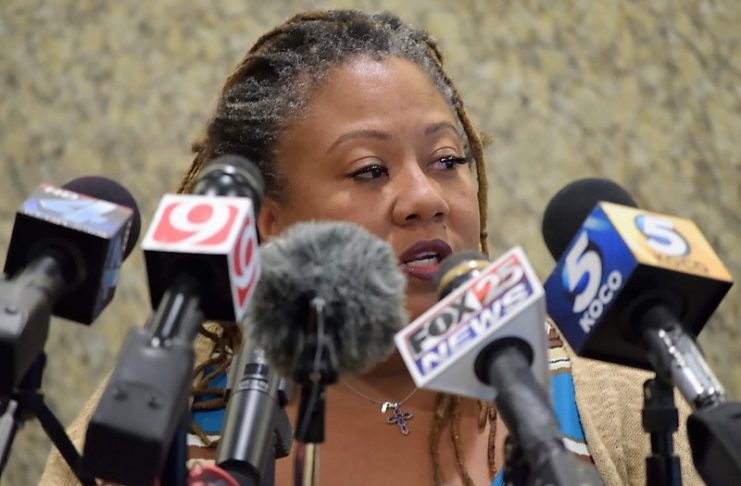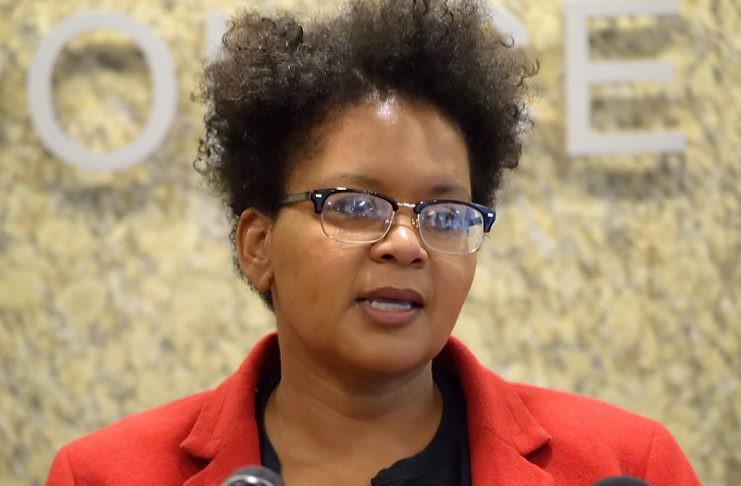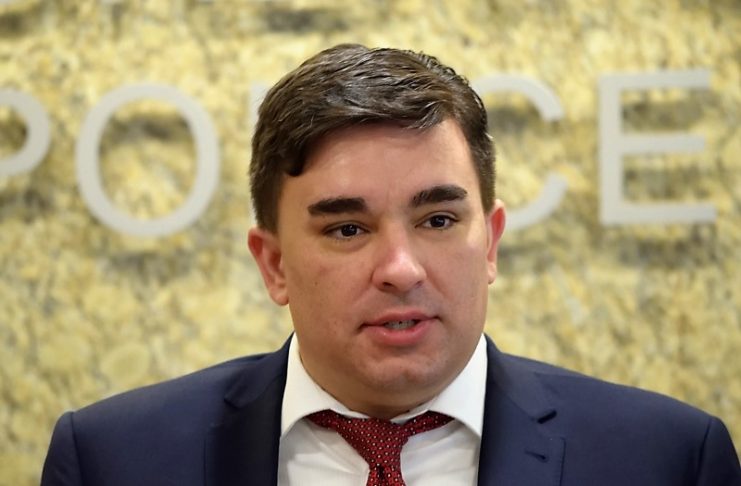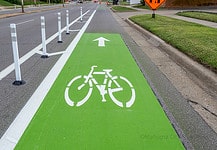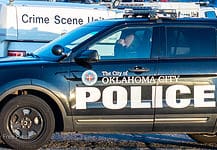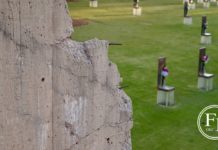Last Updated on December 4, 2016, 5:30 PM | Published: November 30, 2016
The five-month logjam in negotiations over body-worn cameras has finally been broken between the Oklahoma City Police Department and Fraternal Order of Police Lodge #123. The union represents the department’s officers.
Police Chief Bill Citty and FOP President Jon George expressed relief, as did several civil rights leaders Citty invited to speak at a police headquarters news conference Tuesday, Nov. 29.
The result will be that 100 body worn cameras previously placed in storage in June will go back into service by Jan. 1.
Officers will be trained using the new policies successfully negotiated between the two parties. In addition, 180 new body-worn cameras will be added using a $270,000 grant by the U.S. Department of Justice. The department estimates that 280 to 300 body-worn cameras will be sufficient to equip each officer who comes into regular contact with the public.
Once an officer is trained and equipped with a body-worn camera, they will have 90 days to come into full compliance with the department’s new policies. The new policies have a clear procedure in place to discipline an officer out of compliance, said Citty.
The 100 body-worn cameras previously being tested were taken out of the field in June due to an arbitrator’s ruling in favor of a grievance filed by the union in 2015. The organization’s position was that OKCPD should develop body-worn camera use policies through formal negotiations. The previous policy had not been negotiated.
The process
George said the union’s major point of concern was about who could look at the body-worn camera videos and for what purpose. With the new agreement, there are clear guidelines and procedures for officers and department management about the use of the videos.
“I believe we have some really good things in there that provide accountability to the public, management’s rights and – most important for me – the officers’ rights,” George told Free Press afterward.
But the process involved more leaders than just those of the department and the union.
“We had a lot of civil rights leaders and civic leaders that we met with on an ongoing basis,” said Citty. “Legitimately so, they had concerns about the cameras even being implemented at all based on some of the differences that were occurring and things here that had happened.”
Citty praised George and the FOP for doing “something that they hadn’t done much of before, which was to meet with some of the civil rights leaders.” He said that because of all parties being willing to meet regularly over time, “we are going to have a really, really good product.
Community leaders
Citty asked several of the contributing civic and civil rights leaders to speak to the media as well. In succession, each one praised Citty and George for reaching out and being willing to develop a process that can build trust between the community and the police.
“Not only were the cameras important for us – that it protects us from them- but it protects them from us. It covers both, and that’s a good thing,” said Garland Pruitt, president of the Oklahoma City Branch of the National Association of Colored People. The NAACP is a long-standing civil rights organization in the U.S. and Oklahoma City.
Two representatives from newer civil rights groups also spoke.
T. Sheri Dickerson, president of Black Lives Matter – Oklahoma said, “It has been a long time coming. We are very pleased.” The group had organized a large, peaceful march and rally in July that had an estimated 2,000 to 3,000 participants.
After the news conference, Dickerson talked to Free Press about the process with the department and the union.
“They were very thorough and very conscientious of the process,” Dickerson said. “They were trying to make sure that they listened to the citizens. She went on to describe the process as “very positive” and “a truly collaborative effort.”
“Today is historic,” said Grace Franklin, poet and co-founder of Artists for Justice. “It’s a wonderful day in Oklahoma City that we have body cameras, and that we are like other major metropolitan cities that have a way to hold police officers accountable and also to have protection for citizens in various ways.”
Artists for Justice formed in support of the 13 black women who accused former OKCPD officer Daniel Holtzclaw of sexual abuse during traffic stops while Holtzclaw was on duty. Holtzclaw was fired, and is now serving a prison sentence for the crimes.
American Civil Liberties Union
Brady Henderson, legal director for the ACLU in Oklahoma praised all parties involved in the process and then pointed to the future.
“It’s a great day because it’s a start of something new. And yet that start follows along two years of work that folks behind me have had a big part in doing,” said Henderson.
He said the body-worn cameras were “not going to solve every problem,” but the use of them would promote “the ability of citizens to trust.”
Henderson also praised the forming of PACT, or Police and Community Trust initiative for bringing various community leaders together to improve relations between various police agencies and the citizens they serve. The group will continue the process going forward.
The Rev. Lori Walke, associate pastor of Mayflower Congregational Church and Dan Batchelor, director of Peace House told Free Press they attended out of support for the process.
“I believe we have some really good things in there that provides accountability to the public, management’s rights and – most important for me – the officers’ rights,” Batchelor said.
Walke said that she valued the “accountability not just for police but for citizens.”
“We don’t have to do any more he said/she said kind of police work or accusations from citizens,” Walke said. “We’ve got it on camera.”
(Click on this gallery to view larger versions of the photos)
Note: T. Sheri Dickerson is not related to the author of this report.
Founder, publisher, and editor of Oklahoma City Free Press. Brett continues to contribute reports and photography to this site as he runs the business.
